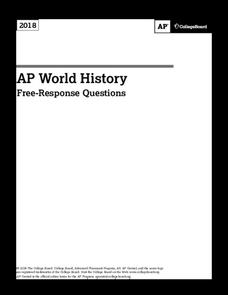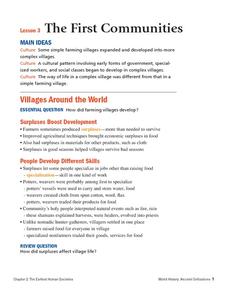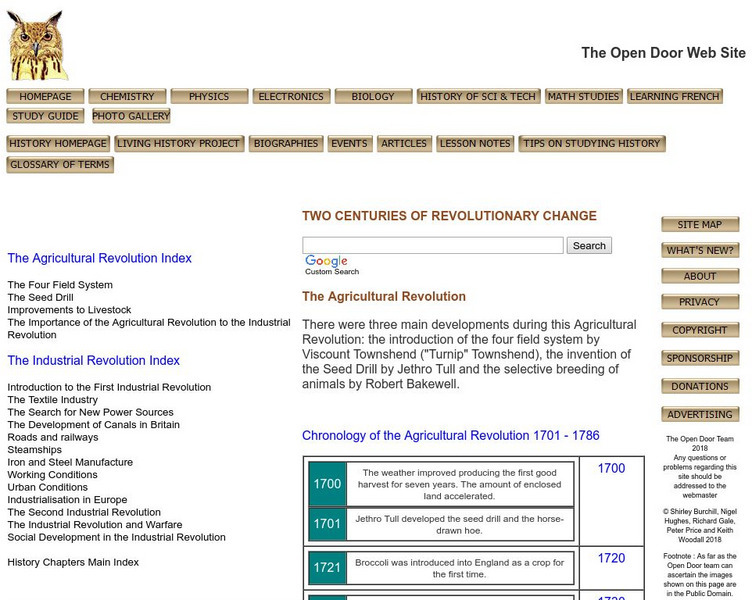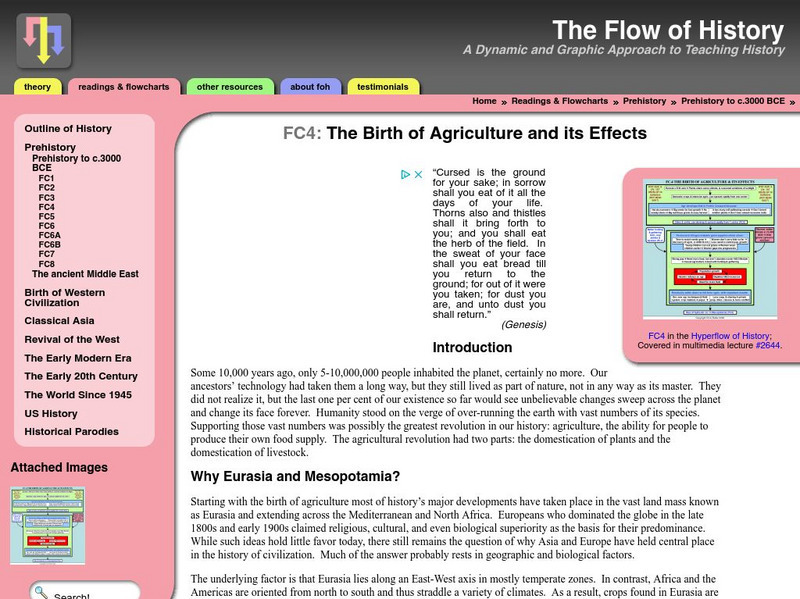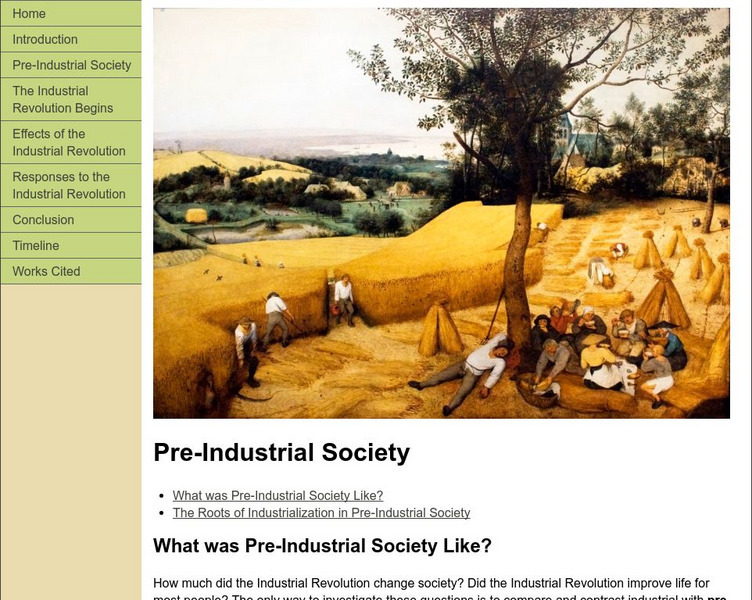National Wildlife Federation
Quantifying Land Changes Over Time in Areas of Deforestation and Urbanization
Is qualitative or quantitative research more convincing when it comes to climate change? In the eighth lesson during this 21-part series, scholars begin by performing a quantitative analysis of deforestation and urbanization. Then, they...
New York State Education Department
Global History and Geography Examination: January 2010
Agriculture was more revolutionary than some might think. Using a primary source set—including photos of artifacts from Mesopotamia and an amusing comic—learners consider the impacts of the neolithic, agricultural, and green revolutions....
College Board
2018 AP® World History Free-Response Questions
How were the development of railroads critical to the rise of empires? Scholars delve into the relationship between the two using a documents-based question from College Board. Other prompts explore ideas such as nomadic and sedentary...
Council for Economic Education
The Economic System of Medieval Europe
How are economics and politics intertwined? Societies in the Medieval period used feudalism for both economic and military reasons. The arrangement provided safety and met other needs. Using the included simulation, individuals...
Council for Economic Education
The Neolithic Agricultural Revolution
What effect could one person's invention have on the human race? In the case of the Neolithic Agricultural Revolution, small improvements in farming methods led to increased food production. The human population began to boom, leading us...
Council for Economic Education
Great Civilizations Develop around Rivers
If you lived in prehistoric times, what kinds of choices could your family make to increase their chance of survival? By making similar decisions in a simulation game, participants discover how specialization creates both opportunity and...
Earth Day Network
The Neolithic Revolution
With the abundance of food products we can easily access in our society today, it is easy to forget the toll this can take on our global environment. Young learners will discover how the transition to agriculture and domesticated living...
Curated OER
Prehistoric Culture
Make prehistoric culture easy for your class to understand with this well-composed presentation. It provides timelines for the Neolithic, paleolithic age, and the agricultural revolution. Images and information on two prehistoric sites...
Houghton Mifflin Harcourt
The First Communities
These documents list essential questions and foundational concepts associated with early civilizations and farming communities in the agricultural revolution. Use this as a starting point for developing specific lessons and activities...
Beacon Learning Center
Growth of a Revolution-The Industrial Revolution
How did changes of the agricultural revolution in eighteenth century Great Britain influence the Industrial Revolution that followed? How were inventions and processes of the Industrial Revolution interrelated? This resource includes a...
Curated OER
INDUSTRIAL REVOLUTION
Tenth graders identify causes and effects of the Industrial Revolution, analyze the benefits and negative consequences, describe the operation of British government, and identify British social and political reforms resulting from the...
Curated OER
Industrial Revolution - History before the Industrial Revolution
Sixth graders consider how inventions fueled change. In this Industrial Revolution lesson, 6th graders view a PowerPoint presentation that feature technological innovations that made it possible to create goods in factories. Students...
Smart History
Smarthistory: The Neolithic Revolution
Website with photos and informational text on the Neolithic Revolution and the changes brought about by the way people lived. With links to additional resources.
Other
Saudi Aramco World: Beginning of the End for Hunter Gatherers
Article details the remarkable archaeological discoveries in a region of Turkey where excavations at a Neolithic site point to a society in transition, from nomadic to agricultural.
Open Door Team
Open Door Web Site: Jethro Tull and the Seed Drill
Jethro Tull (1674-1741) invented a machine that helped to increase the harvest yield by planting seeds in straight lines, a vast improvement over sowing by hand that led to greater crop yields.
Open Door Team
Open Door Web Site: The Agricultural Revolution
Teacher-contributed content on topics related to the agricultural revolution, such as four-field crop rotation, the seed drill, selective breeding of livestock, and the impact on the Industrial Revolution.
Tom Richey
Tom Richey: British Agricultural Revolution
Enhance AP European History studies with this slideshow. Find a thoroughy illustrated breakdown of the agricultural revolution in England from advancements in science and technology as well as outside of the box thinking which led to...
Flow of History
Flow of History: The Birth of Agriculture and Its Effects
Why was the birth of agriculture such an important development in the prehistoric times? This question is answered in an easy-to-understand overview. The effects of agriculture are also mapped out on a flow chart for visual analysis.
Other
Modern World History: Pre Industrial Society
In this textbook unit, students learn about what society and the standard of living were like prior to the Industrial Revolution. The average peasant grew their food and kept farm animals. Change took place much more slowly, but the rate...
American Association for the Advancement of Science
American Association for Advancement of Science: The Slow Birth of Agriculture
An article which describes the slow process of crop cultivation. The author argues that crop cultivation and village life may not have been connected.




